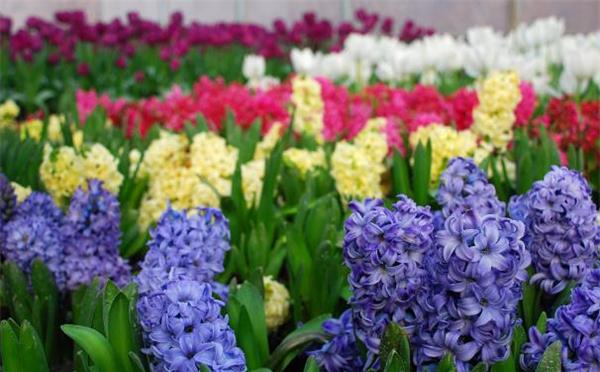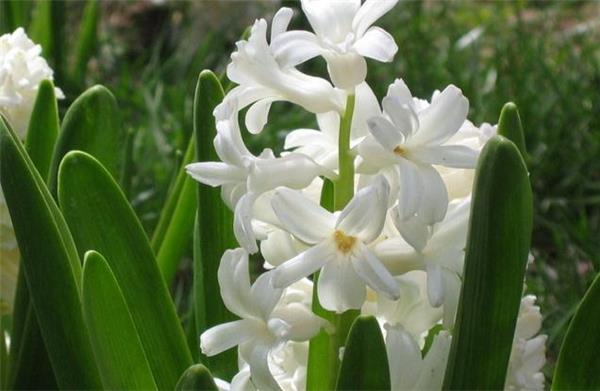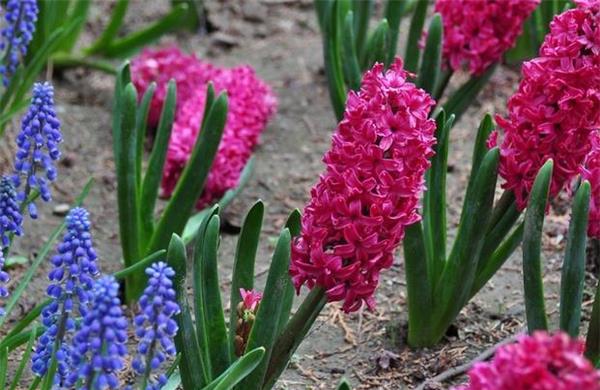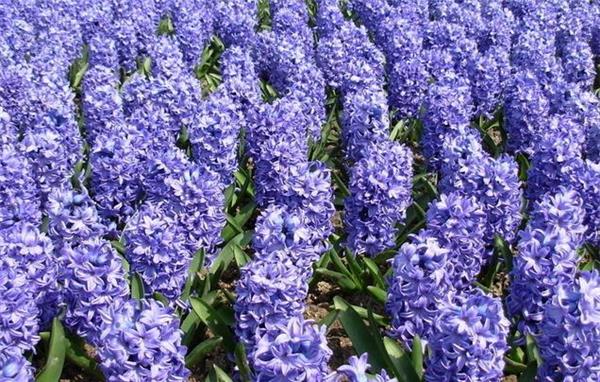Do you know what hyacinth is?
Hyacinth flowers have many colors, and different colors of hyacinths have different expressions. So, what is the fancy language of hyacinth? Perhaps some friends do not have a special understanding of this. Today, I will give you a brief introduction. Let's learn about it together.

The introduction of hyacinth
Hyacinth is a perennial herb, often called Narcissus, because it is the most fragrant flower of the most flowering plants, and it comes from southern Europe, so it is called Narcissus.
There are many kinds of hyacinth, but the basic plant characteristics are the same: they belong to bulbous plants, and the stems are scaly and oval in shape. When there is no flowering, it looks like garlic and is a fleshy flower. It usually blossoms in about one month, mainly in March-April. Because it is artificially cultivated, it produces many horticultural types and variations. According to statistics, there are more than 2000 varieties in the world, but generally according to flower color can roughly distinguish the common varieties of hyacinth.

The flowery language of hyacinth
Purple hyacinth: sad, melancholy love. Apology, regret.
Lavender hyacinth: gentle temperament, romantic feelings. Sadness.
White hyacinth: secret love. Love that is pure, light or afraid to show.
Red hyacinth: thank you for your touching love (your love fills my heart).
Pink hyacinth: represents enthusiasm.
Pink hyacinth: admiration and romance.
Yellow hyacinth: I am very happy with you.
Blue hyacinth: noble and rich, perseverance, chastity, as happy as to see you.
Dark blue hyacinth: a little melancholy because of love.
Light green hyacinth: if you want to have no secrets, you must first have a kind heart.

Culture method of hyacinth
1. Seed bulb selection: as the nutrients needed for hyacinth flowering are mainly supplied by the nutrients stored in the bulbs and leaves, as long as the epidermis is not damaged, the fleshy scales are not too wrinkled, and the bulbs are hard, heavy and full, can they produce rich and beautiful flowers.
2. Soil requirements: hyacinth culture requires fertile soil and high content of organic matter, and it is best to use sandy soil with good drainage. Before planting, the soil should be humidified and hung for a day before planting. It is required that topdressing is often applied during the growth period, and the soil should be loosened in time after emergence. You can choose to apply topdressing once in winter, before flowering in spring and again after blooming.
3, light: hyacinth culture, to maintain sufficient sunlight in order to ensure normal growth. If the light is too weak, it will lead to hyacinth plant thin, bud small, flowers early Xie, leaves yellow and so on, then the incandescent lamp can be used to fill the light at about 1 meter; but too strong light will also cause leaves and petals to burn or shorten the florescence. Bulbs should not be exposed to direct sunlight before sprouting.
4. Temperature and humidity regulation: too high temperature will lead to abnormal growth of hyacinth, and the rate of blind flowers is too high, preferably less than 15 ℃, which can be increased by spraying, watering on the ground, or ventilated to reduce humidity; while too low temperature will cause frost damage to flower buds, and the root system of hyacinth grows best when the bulb is at 2 to 6 ℃. Soil moisture should be kept between 60-70%, too high, root respiration is inhibited and perishable, too low, the aboveground part wilts, or even dies.

This is the end of the introduction of hyacinth flower language. I believe that after reading it, we will have a certain understanding of hyacinth. I hope the relevant knowledge points introduced today can be helpful to everyone.
Related
- Wuhan Hospital Iron Tree Blooming Result Was Instantly Frightened by the Gardener Master
- Which variety of camellia is the most fragrant and best? Which one do you like best?
- What is the small blue coat, the breeding methods and matters needing attention of the succulent plant
- Dormancy time and maintenance management of succulent plants during dormancy
- Minas succulent how to raise, Minas succulent plant pictures
- What are the varieties of winter succulent plants
- How to raise succulent plants in twelve rolls? let's take a look at some experience of breeding twelve rolls.
- Attention should be paid to water control for succulent plants during dormant period (winter and summer)
- Watering experience of twelve rolls of succulent plants
- Techniques for fertilizing succulent plants. An article will let you know how to fertilize succulent plants.



